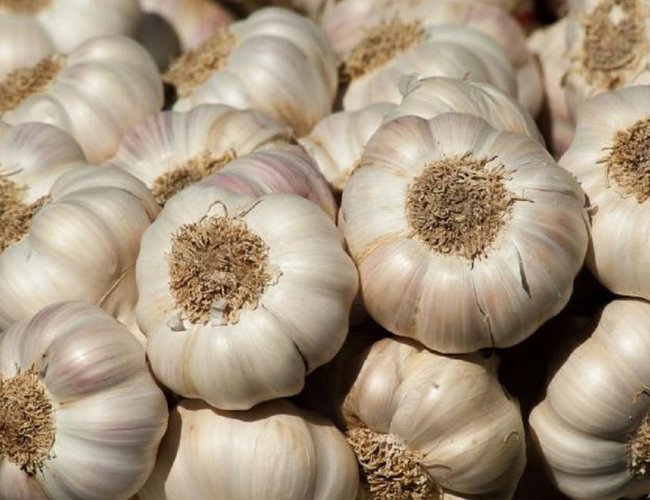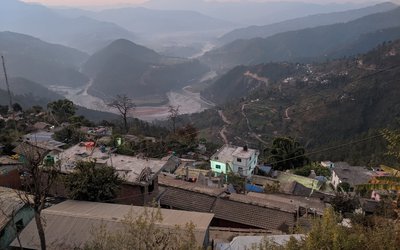
Government officials expressed surprise at the significant increase in garlic imports in Nepal, particularly in recent months. The customs department director stated that the reasons behind the billions of rupees worth of garlic imports are currently under investigation.
Data from the first six months of the current fiscal year show that Nepal has imported garlic worth over 6.18 billion rupees, with the majority coming from China.
This translates to an average monthly import of over one billion rupees in garlic over the past six months.
Analysis of annual customs department statistics indicates a rising trend in garlic imports to Nepal.
Statistics show that Nepal imported garlic valued at 315 million rupees in the fiscal year 2076/077 and 1.095 billion rupees in the fiscal year 2077/078. The department reported garlic imports of 1.533 billion rupees in 2078/079 and 1.1125 billion rupees in 2079/080.
Information Officer Mukti Prasad Shrestha stated that garlic imports amounted to 2.22 billion rupees in 2080/081.
The department's data indicates that Nepal's total garlic imports reached 6.18 billion rupees. From July to December of the previous fiscal year, garlic imports were valued at 878.9 million rupees.
In comparison, Nepal imported garlic worth more than seven times the amount exported in the first six months of the current financial year, with statistics showing exports totaling 920,000 rupees during that period.
The Ministry of Agriculture and Livestock Development in Nepal reported that in the fiscal year 2079/080, 73,567 tons of garlic were cultivated across 9,570 hectares.
In the previous financial year 2078/079, Nepal cultivated 9,943 hectares and produced 74,763 tons of garlic.
The Ministry's data indicates that in the financial year 2077/078, 72,490 tons of garlic were cultivated in an area of 9,784 hectares.
Government officials and farmers note that the garlic produced in Nepal is primarily consumed domestically.
Officials from the Ministry of Agriculture and Livestock Development and the Customs Department have expressed concern about the unusually high volume of garlic imports into Nepal in recent months. An
information officer, Shrestha, stated to BBC News Nepali that they are investigating the reason behind this surge in imports. The Ministry officials suspect that garlic is being imported from China and then illegally exported to India.
Mahanand Joshi, a senior agricultural economist and information officer at the Ministry, raised doubts about the consumption of over six billion rupees worth of garlic in just six months, suggesting that there may be illegal garlic trade happening. He mentioned that they are trying to track down where the imported garlic has been distributed. During bilateral discussions, Indian officials have reportedly expressed
concerns about the illicit entry of Chinese garlic from Nepal.
The director of the customs department, Shrestha, suggested that the illegal export of Chinese garlic from Nepal could have increased due to higher demand caused by reduced production in India. However, he emphasized that an official reason for the significant increase in garlic imports can only be determined after a thorough investigation.
Strict quarantine measures are in place in Nepal, allowing the import of plants and plant products that are not prohibited only after following the procedures outlined in the Plant Quarantine and Protection Act, 2064 and Regulations, 2066. However, some officials have noted instances where importers have brought in garlic using a letter of credit from the bank without obtaining permission from the Plant Quarantine and Pesticide Management Center.
Following a meeting of the Plant Quarantine Committee on November 17th, additional precautions have been implemented in the importation of plants and plant products, with an updated list of common pests. The Center is planning to issue a reminder notice soon, emphasizing the need for importers to obtain an entry permit before bringing in any plants or plant products.
Prakash Paudel, a senior crop protection officer and information officer at the center, stated that the Center revoked a permit for garlic import in January due to non-compliance with the conditions. The Center is urging importers to adhere to all requirements to avoid any issues with their imports.
What is the opinion of experts?
Hari Dahal, the former secretary of the Ministry of Agriculture and Livestock Development, also questions the garlic import statistics, finding it unusual. He notes that traditionally, people in mountainous regions have historically consumed garlic grown locally, but now seem to be purchasing and consuming garlic from urban markets. Dahal recalls a time when Indian officials expressed interest in importing betel nuts from Nepal, despite limited betel nut production in the country. He suggests that a thorough study is needed to determine the underlying reasons for the significant garlic imports.
This information is based on a report by BBC Nepali Service.
- NEPAL-THAILAND: Joint Business Council
- Apr 13, 2025
- BIMSTEC SUMMIT: Nepal’s Stand
- Apr 11, 2025
- IME GROUP: Expands Into Paper Industry
- Mar 24, 2025
- CPN UML: Instigated By India
- Mar 23, 2025
- ADB’S CHIEF ECONOMIST: Nepal Reduces Poverty
- Mar 11, 2025















